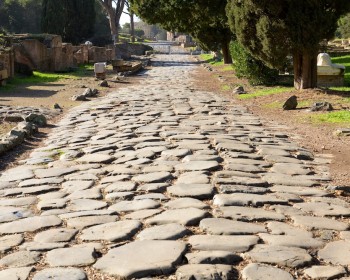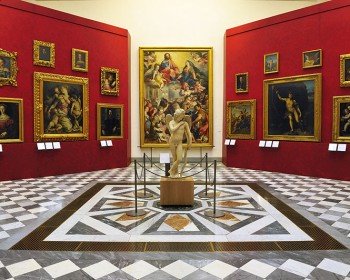Everyone knows the Arthurian myth of Excalibur, the sword in the stone, a key element in the life and legend of King Arthur and his valiant Knights of the Round Table. Yet they may not be aware, however, that this iconic myth may have been inspired by a sword that emerged in the Tuscany region of Italy.
Much like the legend of Arthur, this story is intrinsically connected to the inner world as it begins with a shift in a valiant knight’s life due to a vision from Archangel Michael.
During the XII century, Galgano Guidotti was a rich nobleman trained in the art of war and notable for his violence and hedonistic approach to life. All of this was to change due to the intervention of Archangel Michael, often depicted wielding a sword and symbolizing the archetype of the warrior saint. Thus, the Knight who once was on the edge of destruction experienced a shift and became known as the Knight of God.
As the legend goes, the Archangel Michael appeared before Galgano guiding him to change his life. Although ridiculed by his loved ones, the Knight decided to become a hermit and follow his inspirations. This, of course, created strong opposition within his family but their attempts to change his mind were futile. Led by a seraphic voice to the top of Montesiepi, he had a vision of a round temple in honor of the Blessed Virgin Mary, God and Archangel Michael. Upon climbing the hill, he was inspired to renounce his worldly desires and thrust his sword into the stone. Saint Galgano went on to live on Montesiepi as a hermit and was worshipped as a Saint, the first one to reportedly be canonized formally by the Church as ordered by Pope Urban III.
After his death in 1182, the round temple from his vision became reality as the “Rotonda di Montesiepi” circular church was constructed. Nowadays, The Montesiepi Chapel holds medieval items and art. Its centrepiece, the real Sword in the Stone, is now protected by plexiglass due to the various attempts to remove it and still attracts visitors who are fascinated by its history. As one of the knights of the round table is named Sir Gawaine (Galganus), it’s possible that the myth of the sword in the stone was passed on to England through the stories told by European pilgrims of the Medieval Age as Italy’s Via Francigena played an important part in European travels.
Saint Galgano’s hero journey shares similarities to that of King Arthur as the Christian Knight was initiated on his path by the guidance of a powerful figure, in this case Archangel Michael, a sword was instrumental in his initiation and his path was full of danger. Historically, however, the stories of Arthur and his Knights appeared decades after Galgano Guidotti’s canonization and so it is possible that the accounts of Tuscany’s sword in the stone and its Knight turned Saint influenced Britain’s Arthurian legend.
From Arthurian legends to Templar connections, this sword has attracted many theories over the centuries as well as many who doubted its authenticity. In 2001, the researchers from the University of Pavia proved that the sword does indeed belong to the 12th century. A 2x1 m cavity, discovered beneath the sword with the help of radar technology, is thought to be the resting place of the Knight of God - Saint Galgano.
By visiting the Montesiepi Chapel, you will not only experience the site of Tuscany’s Arthurian-like medieval legend, you will also discover some funny anecdotes regarding those who attempted to remove the sword from the stone or cause harm to Saint Galgano. Evidence to this is a pair of mummified hands, carbon-dated to the 12th century. It is said they belong to an assassin disguised as a monk who attempted to attack Saint Galgano only to suffer the wrath of wolves the saint had befriended.
Montesiepi's Hermitage is decorated by Ambrogio Lorenzetti’s now faded frescoes and one depicts Saint Galgano offering the sword embedded in stone to Archangel Michael.
The Sword in the Stone of Saint Galgano is a relic that may have played a part in inspiring the Legend of King Arthur but, aside from that, it is evidence to the fascinating and mysterious history of the Saint-Knight who dedicated his life to God and, as such, it will surely continue to attract those who love stepping into the magic of the Medieval era to discover its mystery and legends.











